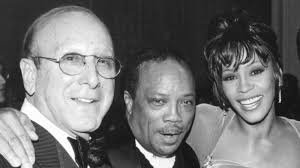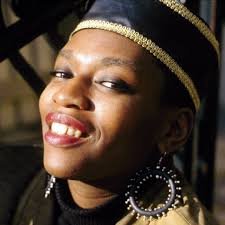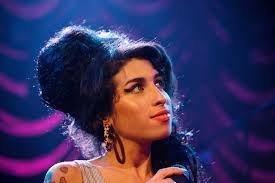Patriarchy and the Music Industry: Women Victims (1)
As a life-long music enthusiast, I have read about the demise of so many music artists. Once artists demand the money being owed them by the music label such as recouping unpaid royalties, or seek a reclamation of their masters, or attempt to exit their record labels, after exposing the evil machinations of the music industry, they end up dead, either through a plane crash, car accident, pneumonia, drug overdose, drowning, suicide, etc.
In most cases, these artists are usually depicted by the media as irresponsible, reckless and indisciplined beings who deserved such premature outcomes. They are usually to blame for the problem. It must be underscored that the patriarchal system thrives on highlighting the symptoms of a matter, rather than address the root cause. The media refrains from the investigation of the artistic work environments and pertinently questioning the music executives. The media abstains from the exposure of the music industry’s vampiric nature and the executive Draculas inherent within it.
Imagine, for one that you have a headache. Instead of diagnosing the cause, the doctor bombards the patient with a cocktail of medication. The cause requires much work and diligence to ascertain and is therefore avoided. How many times have you been judged based on a single story? No one cared to verify the authenticity of what they heard about you. Perhaps, they feared that by so doing, the truth would be unveiled and would show that you are not as corruptible, as they would wish you were. And so to justify their malicious feelings about you, they joined arms in your castigation. How many times have women received justice for rape? They are blamed for their dress, their demeanour, their existence, etc. Anything, but the rapist! I hope my point is understood. I digress!
For countless times, the assertion has repeatedly been made to our faces that artists are worth more dead than alive. The record labels benefit through the retainment of artists’ arrears, and the proceeds from the insurance policy taken out on them. This has been the tradition for donkey years. Currently, the 3 major music companies which include Warner Music Group, Sony Music, and Universal Music Group jointly generate approximately $2.9 million per hour. Consequently, the posture of victim-blaming and shaming which inundates the entirety of our currently lived patriarchal and life-threatening reality is preposterous. Clearly, the media is complicit in its refusal to pose pressing questions and embark on crucial investigations.
The premature demise of many artists apparently share some eerie commonalities. For instance, Janis Joplin, Jimi Hendrix , Amy Winehouse and Kurt Kobain died at age 27, which led to the coinage of the “27 Club”. Aaliyah and Otis Redding died in plane crashes in the nascent phase of their respective careers. Elvis Presley and Michael Jackson were allegedly substance abusers who loved to overmedicate. But is that why they died?
It is no longer news that the Hip-Hop/Rap branch was hijacked by music executives in the 1990s. The purpose was the recreation of a genre that would infiltrate the black community and instigate violence, perpetuate hate crimes and gangsterism among the youth population. With the engagement of the Police and the justice system as manipulative agents, the goal was to feed the US prison- Industrial complex with as many incarcerated prisoners (innocent or guilty) as possible for the furtherance of the economic expansion and prosperity of global business corporations. Slavery was reinvented and redecorated.
The direct outcome of this evil was the murder of 2pac and Notorious BIG in the 1990s, based on the so-called East and West coast rivalries. The two men who died within a year of each other were shot in drive-by shootings. The affliction of artists knows no racial or sex boundaries. A greater majority of the musicians, whose music has nourished us through the years, have an ugly story to tell about the industry.
The following is by no means an exhaustible inventory of some women artists who have transited prematurely under questionable circumstances. The list of men casualties follow hereafter.
Aaliyah: Baby Girl died on August 21, 2001 alongside members of her entourage in a plane crash on her return from the Bahamas, where she had shot the video to the song “Rock the Boat” from her third album Aaliyah. The account of developments before the tragedy abound in the media. However, two theories have been propounded to rationalize her murder. The first was her music mogul uncle, Barry Hankerson’s constant facilitation of her movement to multiple record companies without a commitment to one for the purpose of profitability for music executives. Aaliyah’s three albums were produced in conjunction with three respective labels namely: Age Ain’t Nothin’ but a Number (Jive), One in a Million (Atlantic) and Aaliyah (Virgin). Strangely, it has been alleged that Hankerson took out a court order prior to Aaliyah's ill-fated trip which offered him and his record label Blackground records, immunity from any liability in the event of her death. He thereafter received a $90 million dollar life insurance payout after her death.
The second theory links her to a vindictive Jay Z, who has been pinpointed as the mastermind of her demise. It is said that she declined his romantic proposition, and instead chose Damon Dash, his friend. The plan was to make her the half of a power couple image and marketing project, endorsed by the Hollywood machine. Her declination of the offer led to her erasure and replacement by Beyonce Knowles.
2. Adeva: Patricia Daniels was the quintessential “Queen of House Music” whose reign spanned between the late 1980s and early 1990s. Her debut album Adeva enjoyed critical acclaim, particularly in Europe. The sophomore album, however, flopped due to underpromotion from her music label. Daniels would reveal the mounting pressure on her to act out of character for media publicity and engage in whoredom for the appeasement of certain persons within the industry. Furthermore, she was owed million of dollars by her label, including revenues generated from her tours. It took an altercation with her label executive over her entitlements to voluntarily exit the industry. Since then, Adeva has worked as a teacher.
3. Amy Winehouse: Winehouse was a fantastic soulful singer. I call her the “black woman in white skin”, reminiscent of the Motown singer, Teena Marie. Her sophomoric album Back to Black (2006) brought her to international limelight and fetched well-deserved accolades. Listening to her belt in her delightful contralto was an enthralling experience all by itself. However, the constant media imagery of a never-ending intoxication thereafter, after so many wins, sparked curiosity and questions.
It is an open secret that musicians are intentionally fed drugs as soon as their names are scrawled on the roster of a music label for two purposes namely: artistic control and energy maximization to keep them working round the clock. There exists to my knowledge no welfare department which caters to the physical and mental wellbeing of musicians. Furthermore, no talent scout gives a conspicuously drug addicted or intoxicated young talent a chance to blossom, as it could ruin business. The destruction of artists begin after their entry into the industry.
The hauntingly dark single “Rehab” was Winehouse’s literal disclosure of her personal challenges and a cry for help. Through a rawfully honest story-telling, the song mirrored her pain and battle with addiction and loneliness. Sadly, the toxic work environment prioritized money over artist management and a rescue plan to salvage the deteriorative state of the immensely talented Winehouse was never conceived because that was never the plan. She would pass in 2011, at age 27, from alcohol poisoning. Who poisoned the alcohol? or was it a case of the artist is more valuable when dead than alive?
4. Angie Stone: Just last December, Stone accused Universal Music Group of theft. She disclosed in a viral post on social media that the results shown by forensic accountants revealed that the profits accruable to her music publishing, royalties and mechanicals had been stolen by the record label. She literally stated in the post that should she experience pushbacks and negative outcomes after her outburst, the said post should be regarded as the instigator.
Fast forward, on March 1, 2025, she dies tragically in an automobile accident. She is said to have been the only casualty in that incident. Two weeks prior to her demise, she had publicly divulged that there had been attempts made on her life.
Stone was a gifted lyricist who had written multiple songs for fellow artists and film scores. She was the mastermind and inspiration behind the “Neo-soul” movement. Before Erykah Badu, Jill Scott, D’ Angelo, there was Angie Stone, the “Queen of Neo-Soul”. Since patriarchy thrives on an induced voicelessness and lack of agency of its victims, Stone had to be punished for exposing the enemy. Despite her failing health at the time, when the dots are properly connected, her demise was a foul play and no coincidence.
5. Blu Cantrell: She began her career as P. Diddy’s background artist. Her musical ability landed her a record deal with Arista Records in the early 2000s with the single “Hit Dem Up Style” from the album So Blu (2001) as a major breakthrough. The album earned gold status within the span of 2 weeks.
Her purported romantic ties with Jay Z would spark media rivalry with Beyonce. Cantrell never openly spoke about the state of affairs, however, she made a public statement in attempt to redirect Beyonce’s venom towards Jay Z and not herself, thereby validating the the rumour mills.
Following the release of her second album Bittersweet (2003) at the same time as Beyonce’s debut album, Cantrell vanished from the music scene.
In 2014, she was reportedly hospitalized in the aftermath of an alleged mental breakdown. She had been found on the streets of California screaming about a plot to kill her with poisonous gas.
Recently, Cantrell ventured back into public eye and has revealed that her perceived disappearance from the music scene was a conspiracy, not voluntary. Someone had forced her label to discard her and calculated attempts were made to render her insignificant. She has accused Beyonce of the plot to kill her in 2014, having discovered that Cantrell was pregnant for Jay Z. In the light of the failed attempt, she was coerced to abort the baby. Ironically, Beyonce’s first daughter would also be named BLU.
Beyonce was “anointed” by the industry and weaponized against black women artists. Since her emergence as a cult figure in 2003, several women singers’ careers have been destroyed, except Rihanna and Alicia Keys. Nonetheless, their level of success pales in comparison to Beyonce’s.
Why? The patriarchal music industry flourishes through an instigation of rivalry between women. The coexistence of women artist on a linear playing field devoid of hierarchy is a taboo. It positions a so-called “queen” atop a pyramid and compels other women artists to aspire for her position through combat, thereby obliterating individuality and originality. These queens are innately weakminded bereft of self-awareness and function to weaken, demean and destroy other women. Is it not questionable that in the last 22 years, the only dominant black female singer has been Beyonce?
(To be continued)










